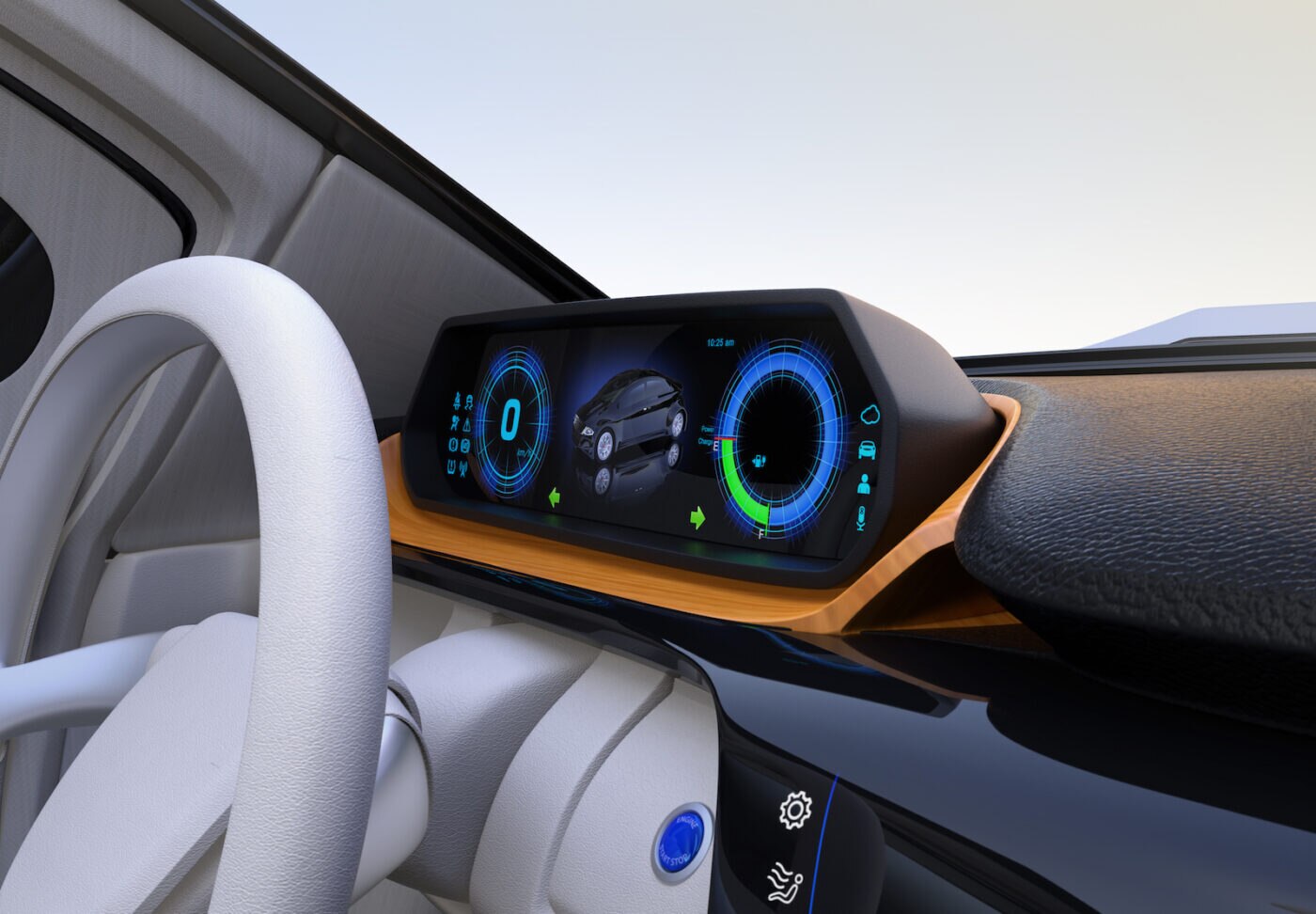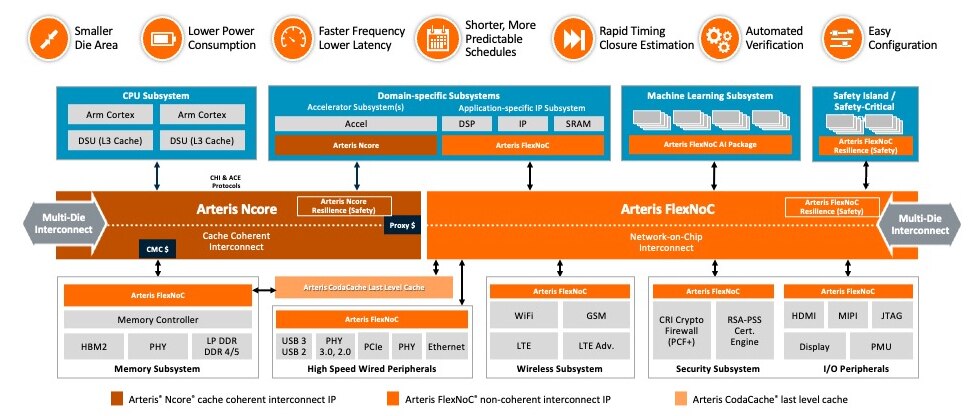Driving Faster to a Software-defined Automotive Future with Arteris

The accelerating growth of Advanced Driver Assistance Systems (ADAS) is not only saving lives and changing the way we interact with our vehicles but it’s quickly transforming how vehicles are designed.
That, in turn, is accelerating automotive innovation: The ADAS processor market was valued at $2.4 billion in 2021 and is forecast to grow to around $12 billion by the end of the decade, according to the analyst firm Strategy Analytics. That’s a CAGR of 22%. The total automotive processor market is forecast to grow from $12.6 billion in 2021 to over $30 billion by the end of the decade, according to Strategy Analytics.
This acceleration of innovation is yielding vastly more capable ADAS systems, richer driver experiences and electrification. This has been a long-held vision by many in the automotive world, but getting there has taken perhaps a bit longer than some had hoped. This was partly due to the longer design cycles the automotive industry was historically used to and what was, until recently, the nascent hardware and software ecosystem necessary to accelerate innovation.
Now, thanks to more capable automotive SoCs and MCUs, the industry is embracing the new era of software-defined vehicles. This has come about as the rich and open software ecosystem has matured, best-in-class technology is now readily available for automotive applications developers, who no longer need to sacrifice efficiency or safety for performance.
What impact does the Arm and Arteris partnership have on automotive innovation?
To be sure, no one is resting on his or her laurels, especially as consumers demand more and better experiences – many of which mirror their mobile-device experiences – and electrification of their next vehicles. More work needs to be done as the industry evolves its adoption of powerful digital technologies. Delivering to these requirements requires innovation across the computing platform, in the processors and the memory system that supports them, including the interconnects used to connect the entire SoC.
To that end, Arteris has extended its partnership with Arm to deliver best-in-class automotive solutions using Arm AE processors and Arteris’s interconnect IP. These solutions will provide the most advanced safety and security capabilities to the automotive market, with Arm having licensed a portfolio of released and future Arm Cortex CPUs to Arteris IP to expand and accelerate delivery of such solutions.
The combination of next-generation Arm Cortex family including AE CPUs, and Arteris system IP – consisting of FlexNoC® and Ncore® interconnect IP and Magillem® IP deployment software – will enable silicon providers, tier one automotive companies and OEMs to integrate the most advanced safe compute capabilities, including Armv9 features, into their automotive SoCs. This extended partnership means that Arm and Arteris are now working closely on integrated and optimized flows with the highest quality of results, enabling ISO 26262 systems with the highest automotive safety integrity levels, seamless integration, and well-aligned roadmaps to solve current and future automotive SoC design challenges.

Arteris System IP connecting Arm IP and SoC subsystems
Arteris’ technology brings with it proven speed and lower latencies, shorter, more predictable design schedules, easy configuration, power efficiency and smaller die sizes. Moreover, Arteris System IP is the gold standard in automotive, with an estimate of over 70% of ADAS SoC being design Arteris interconnects already.
What new possibilities are Arm and Arteris opening up in the automotive industry?
This partnership will provide the ecosystem with greater choice to extend and improve functional interaction, power, performance, area, and functional safety features, giving developers of SoCs and MCUs better means to create their next-generation automotive and autonomous offerings.
It also addresses changing design dynamics: In the era of the software-defined vehicle, software development gets ever more complex. Hand in hand, the value chain delivering those innovations becomes much more complex and distributed. That can be a challenge when more systems and components are being integrated inside vehicles to improve efficiency, performance and lower cost. In other words, evolving automotive architectures are consolidating formerly disparate functions using specialized processing and flexible connectivity to do so, which impacts the architecture of SoCs.
In addition, there’s a mountain of software being developed – over 100 million lines of code and growing – that underpins the software-defined vehicle. To handle that, computing solutions hinge on important improvements in heterogeneous compute (which helps drive improved performance, power and thermal efficiency and cost). This partnership helps address these challenges by enabling SoCs that underpin new generation vehicle and software architectures. With suitable architecture, designers can “shift-left” their development effort, start software development earlier as well as deploy updates and new features into vehicles after they’ve left the dealership. (The research firm Gartner, for example, estimates that half of the top 10 automakers will offer new features through software updates starting next year).
How is Arm accelerating technology innovation in the automotive industry?
Arm has leveraged years of innovation in the smart phone and data center markets to bring new flexibility and performance into automotive development. We continue to invest across our CPU families – Cortex A, R and M – as well as in Arm Mali GPUs and ISPs to advance everything from complex graphics to compute vision workloads. Future AE-enabled technologies will build on this legacy, driven by the Armv9 architecture which brings a range of new security features – to mitigate things like buffer overflow attacks and memory-safety violations – better performance and larger core counts. Developments in the Cortex-R family enable new software platforms aimed at SDV such as AUTOSAR Adaptive to achieve class-leading real-time performance. All these new capabilities ensure SDV, including the cloud-native software enabled by industry groups like SOAFEE, runs best on Arm.
Consumers are really the driving force behind the breathtaking changes happening in automotive design today. Part of this is due to their realization that the digital technologies that have transformed their lives in mobile and other compute devices can change the way they own, drive, maintain and enjoy their vehicles. But another force is the remarkable coalescence that happens when the technology industry sets its sights on conquering big problems.
Innovation ecosystems have blossomed around Arm technology stretching back to the earliest days of mobile-phone design. They’ve emerged as well in infrastructure and the data center, laptops and large form-factor computing designs, IoT and automotive. This has happened thanks to a dedication to a combination of things: A passion for making developers’ jobs easier and more efficient to free them to realize their innovation visions, focusing on openness and standards and making sure that, at the end of the day, a developer’s solution will just work on Arm.
For more information please visit the Arteris partner page on Arm.com.
Any re-use permitted for informational and non-commercial or personal use only.












